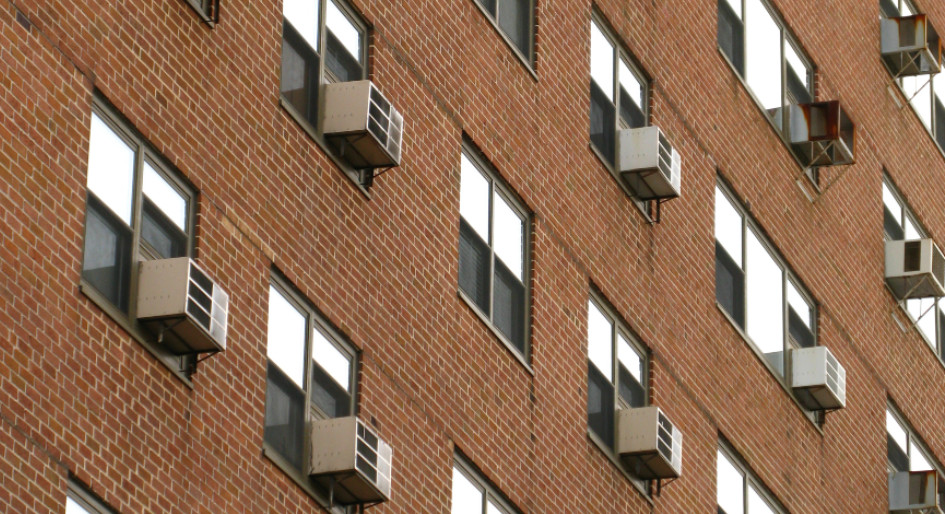Cooling is positioned as a key amenity that Ontario renters should generally be able to enjoy in proposed amendments to the provincial Residential Tenancies Act. Legislation introduced as part of the recently tabled Bill 97, the Helping Homebuyers, Protecting Tenants Act, would ensure that tenants are permitted to install window or portable air conditioners in most circumstances, and provide for landlords to pass through resulting extra costs in situations where electricity is incorporated into the rent rather than billed separately on measured consumption.
Arguably, the Ontario government’s stated mandate to reduce red tape is not apparent in the bill’s approach. Nor will it be straightforward to gauge electricity use and costs in suites that aren’t sub-metered.
“The way that section (of the legislation) is set up is untenable when it comes to administration. Any landlord who has electricity included in the rent will find implementing the section to be a nightmare,” submits Joe Hoffer, a partner practicing municipal and residential tenancies law with Cohen Highley LLP.
“You could foresee that it’s going to contribute to further queueing at the Landlord and Tenant Board to adjudicate disputes related to how the extra electricity costs are calculated,” muses Maureen Wilson, a city councillor in Hamilton and vice chair of council’s public health committee.
Conceptually, the proposed rules establish air conditioning as a protected option that tenants cannot be prevented from obtaining (with some prescribed exceptions) rather than an essential that landlords would be compelled to supply. As such, tenants would be responsible for purchasing, installing and maintaining their air conditioners. They would be required to notify landlords, in writing, before a device is installed, while, as part of due diligence tied to operators’ liability, landlords would have to ensure the devices comply with safety standards and any municipal bylaws that might be in place.
The new rules should come with relatively easy record-keeping requirements in scenarios where multifamily buildings lack central air conditioning, but are sub-metered for electricity consumption. If landlords are already permitting tenants to have window or portable air conditions, appropriate administrative procedures are likely in place now.
“It would just be a matter of the tenant having insurance, providing a warranty about the safe installation of the AC unit and an indemnity clause should there be problems with it,” Hoffer says.
Estimates of electricity use will likely vary throughout the building
Quite a lot more paperwork will be involved to pass through extra electricity costs in bulk-metered buildings. As proposed, landlords “may” do so unless the lease specifically states that air conditioning is included in the rent, with the allowed pass-through to be based on either the “actual cost” or a “reasonable estimate” of the electricity that the air conditioner uses. This increment is to be subtracted again when a tenant “seasonally ceases to use the air conditioner” or “removes the air conditioner”.
Energy management specialists advise that the “reasonable estimate” is unlikely to be a single dollar amount that can be applied uniformly throughout a building. Meanwhile, there is no means to measure the “actual cost” of extra electricity supply for each individual device in the absence of smart meters.
“The methodology for calculating it would be some combination of Energuide values for the equipment adjusted for actual weather or usage and multiplied by marginal electricity costs,” explains Michael Lithgow, manager of energy and climate action at Sunnybrook Health Sciences Centre who has earlier career experience as an energy manager in the multifamily sector. “It could vary a fair amount from suite to suite depending on the setpoint of the air conditioning unit, the amount and quality of glass façade and whether the suite is located near the bottom or the top of the building and the east/north or south/west façade.”
Andrew Pride, an engineer and energy management consultant who also previously worked in the multifamily sector, pegs the electricity cost to operate household appliances in Ontario at a maximum of about $0.10 per hour. Yet, that could translate into significantly differing amounts throughout a building.
“If it’s used only when it is hot inside — let’s say above 24⁰ C — and hot outside, the cost is likely to be $10 to $50 per month for three months of summer,” he projects. “If it’s poorly installed and left in after it gets cold outside, the cost rapidly increases because then extra heat would be needed to adjust for the cold outdoor air that is infiltrating the suite.”
Implementation details left for future regulations
Many of the implementation details will come with future regulations, and advocates for the rental housing industry are now gathering input and preparing to consult with the Ministry of Municipal Affairs and Housing. Tony Irwin, president and chief executive officer of the Federation of Rental-housing Providers of Ontario (FRPO), reports that his organization accepts the government’s motives in attempting to ensure that tenants will have access to air conditioning, but there are some concerns around the safety of installations and whether some older buildings will have sufficient electrical capacity to handle the increased load.
“As an industry, we will obviously make sure that we comply with the rules as they are set out. We just want to make sure that these issues relative to safety, relative to installation, relative to liability, are addressed,” Irwin maintains. “We want people to be safe. We want people to be able to have this amenity if they wish, and, of course, to be able to recover some kind of compensation is also important.”
The proposed legislation includes the exception: “the landlord may, in the prescribed circumstances, prohibit a tenant from installing an air conditioner,” but contains no other details of what those prescribed circumstances might be. It also defers to prohibitions that could be in place through “any applicable municipal property standards bylaw or other applicable law,” although that’s generally expected to pertain only to window air conditioners, still allowing tenants to have portable air conditioning devices.
The legislation has been introduced at a time when some municipalities are contemplating bylaws to require residential landlords to meet standards for cooling. In Hamilton, for example, it has been identified as a potential initiative in the city’s Climate Action Strategy and staff is expected to bring a report on the issue to the public health committee later this spring.
“We have a threshold for heat in the winter, but we don’t have a threshold for cooling in the summer. It will come up for consideration, we’ll have the discussion and take whatever direction we get from there,” Wilson says.
The new provincial legislation is expected to take effect before many of those kinds of local decisions get made.
“Municipalities can look at that and say: If that’s now in place at the provincial level then maybe we don’t need to mandate that,” Irwin speculates. “I guess we’ll have to see how many residents take this up, how well it actually works when it’s rolled out and, then, does that satisfy municipalities that they don’t need to take further action.”
The Ontario government is inviting public comment on the proposed legislation until May 6.
Barbara Carss is editor-in-chief of Canadian Property Management.







